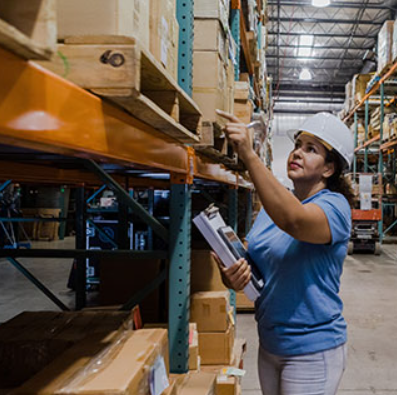
E-commerce logistics plays a vital role in the smooth operation of online retail businesses. It covers everything from when a customer places an order to the moment they receive their package. The logistics process involves several critical components, each contributing to the overall efficiency of an e-commerce business.
Key Components of E-commerce Logistics
Order Fulfillment
Order fulfillment is the starting point of the logistics process. It includes receiving inventory, storing products, picking items when orders are placed, and packaging them for delivery. Small businesses often handle this in-house until they grow beyond a certain volume, at which point they might outsource to fulfillment centers.
Inventory Management
Efficient inventory management is crucial for e-commerce businesses. Since real-time tracking is needed to prevent overselling, companies must maintain optimal stock levels across various warehouses. It’s typical to keep about 30-45 days’ worth of inventory, but this depends on the product type and how quickly it sells.
Warehousing for E-commerce
E-commerce warehouses differ from traditional retail warehouses in terms of layout and operation. Unlike retail that processes bulk orders (case picking), e-commerce warehouses handle individual picks, which requires a different strategy for storage and picking. As a result, an e-commerce warehouse usually processes 2-3 times more orders than a traditional retail warehouse of the same size.
Last-Mile Delivery
Customer expectations for delivery have shifted, with many expecting delivery within 2-3 days or even next-day delivery. This has led to the growth of distributed fulfillment networks, where inventory is stored closer to customers, reducing delivery time.
Returns Processing (Reverse Logistics)
Returns are a major part of e-commerce logistics. E-commerce businesses often experience return rates of 20-30%, much higher than traditional brick-and-mortar retail (which typically sees 8-10%). This necessitates dedicated operations for returns processing and clear return policies.
Technology Integration
Effective integration of technology is critical for successful e-commerce logistics. Warehouse Management Systems (WMS) need to seamlessly communicate with online stores, inventory management software, and shipping carriers. Any delays or disruptions in these connections can lead to overselling, shipping delays, or other operational challenges.
Common E-commerce Logistics Challenges
Inventory Stockouts
Stockouts can occur quickly and have a significant impact, especially when selling through multiple channels such as your website, Amazon, and Walmart. Syncing inventory between platforms is challenging, and even a minor delay can result in overselling and dissatisfied customers. To avoid this, many businesses implement buffers between marketplaces to prevent discrepancies.
Scaling During Peak Seasons
E-commerce businesses often face major challenges during peak seasons, such as holidays, when sales volumes can spike by 300-400%. This surge requires businesses to prepare warehouse space and staffing months in advance. Seasonal workers must maintain high pick accuracy, often competing with other fulfillment operations in the area for talent.
Returns Management
Returns are an inevitable part of e-commerce, and they come with a cost. On average, processing a return costs $8-15 per item, excluding shipping costs. Companies must inspect returned items, restock those that are in sellable condition, and determine what to do with damaged goods. During peak periods, many businesses struggle to process returns within 48 hours.
Shipping Costs
As global shipping rates continue to rise, e-commerce businesses face increasing challenges with shipping costs. New surcharges for oversized packages, residential delivery, and fuel can add up to 20-30% to shipping expenses. Balancing fast delivery with reasonable shipping costs, especially with customer expectations for free shipping, has become more complex.
Technology Integration Issues
For businesses that lack the right warehouse systems, technology integration can become a headache. Your WMS must integrate seamlessly with shopping carts, third-party logistics providers (3PLs), and accounting software. Even a single update from any provider can break these integrations. Many companies spend several hours each week just maintaining these systems.
Last-Mile Delivery Challenges
Last-mile delivery can be a logistical nightmare. Issues like late deliveries, missing packages, and incorrect addresses affect around 5-8% of deliveries. Managing these problems while maintaining a customer service team capable of responding quickly is no small feat, especially when customers expect same-day resolutions.
The Evolving Landscape of E-commerce Logistics
While logistics and e-commerce are separate entities, they are now deeply intertwined. Traditional retail logistics focused on moving pallets to stores, but modern e-commerce has redefined this process by delivering individual items directly to consumers. This shift requires significant changes to warehouse operations and inventory management systems to keep up with the new demands of online retail.












